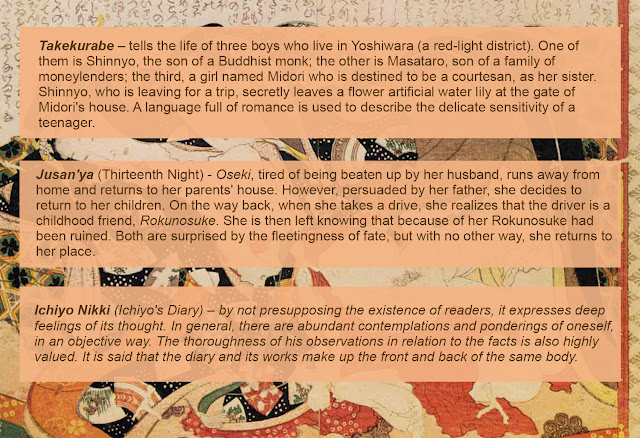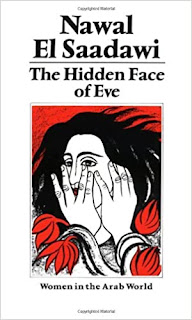A woman without ties
In 1955,
she moved to Bogotá, looking for a less provincial environment and to continue
her university studies. She studied Art and Literature at the Universidad de
los Andes in Bogotá, where she met the art critic Marta Traba and the writer
and creator of the swim movement, Gonzalo Arango.
Albalucía
has always been a free writer, a woman who was silenced for telling the truth
in a country with closed ears. From 1964, she traveled to Europe to continue
her art studies at the Sorbonne in Paris, while simultaneously studying cinema
at the University of Rome.
He lived an
academic, cultural and musical pilgrimage through Rome, Barcelona and Paris, at
the time of the student revolution of May 1968. In the 1970s, he moved to
Barcelona where he met and frequented the house of writers of the Latin
American Literature boom such as Mario Vargas Llosa, Gabriel García Márquez,
Carlos Fuentes, Julio Cortázar and José Donoso, among others.
Her first
novel in Europe was Girassóis de inverno (Sunflowers in winter) (1970), a story about the different aspects
of love; that of a couple, that of letters and that of love hallucinations. She
has also published Twice Alicia, a science fiction and enchantment novel based
on the imagery of Alice in Wonderland and the double face of Alicia as her
alter ego.
In 1972,
she was the victim of an attempted robbery in Madrid that left her with serious
injuries to her head and spine. She returned to Colombia disillusioned. After a
few months of convalescence and recovery, she returned to Europe and did an
in-depth historical investigation of the violence of the 1940s in Colombia. In
1975, in Barcelona, she wrote her most important book.
Estaba la pájara pinta sentada en el verde limón
The novel Estaba la pájara pinta sentada en el verde limón (The pajara pinta was sitting on the lime green) does not have just one narrator. Narration is an encounter that gives voice to people who are very different from one another in Colombian society. The novel is divided into three specific moments in Colombian history:
The murder of Jorge Eliécer Gaitán in 1948,
The massacre of the students of the National University in 1954,
The murder of Camilo Torres in 1966.
One of the
purposes of Albalucía is that Literature is very close to reality. Therefore,
not only in this novel did she get involved with tools such as press clippings:
in her book of short stories, Oh Gloria Inmarcesible (Oh Unfading Glory), there
is also an extensive collage of headlines that reaffirm the unusual of the
Colombian reality.
The most terrible thing was that you could not read the press. They banished us. What is happening now has happened. They showed some horrible pictures. It was an extraordinarily tabloid press. You have not seen or heard anything but deaths, says Albalucía.
With this book, she won the Cali Experiences Award. The winner would
have the work published; however, the publisher refused to print the book
because it mentioned the names of politicians at the time linked to the period
of violence in Colombia. Furthermore, women had little credibility in the
literary field, dominated mainly by male writers.
The Instituto Colombiano de Cultura (Colcultura)
printed the book as part of the collection of the Colombian Culture Library,
with a circulation of 100,000 copies. The work was published amid the struggle
to represent the aesthetic, historical and political sense of a violent past
and present.
Juan Gustavo Cobo Borda, a contemporary writer for
Albalucía, who directed the television program Páginas de
Colcultura (Colcultura Pages) and the magazine Gaceta,
recalls that the book circulated very well, that collection was sold throughout
the country and the newspapers gave them free news.
Some of the factors that influenced the novel Estaba la pajara pinta setada en el verde limón to be misread have to do with the fact that Albalucía was labeled a “crazy” or a “bold woman” for being a revolutionary in a tradition of men and women and few women.
It was also
influential that Albalucía wrote in an experimental register, in the Virginia
Woolf style, that very little had been practiced in Colombia and with which
readers were unfamiliar.
Once the
editions of Colcultura were sold out, Albalucía was waiting for new editorial
proposals for the book to be printed again in Colombia, which did not happen.
Estaba la pájara pinta sede en el verde limón is composed of a chapter zero and four numbered parts. The first part has five chapters; the second, eight; the third nine; the fourth, two.
In twenty-five chapters, seven small stories are constructed, articulated in two great narratives: Ana's personal account (childhood in the province and years in Bogotá) and the history of violence in Colombia (Bogotazo, political violence during conservative governments, the dictatorship of Muñoz Sastoque, of the National Front).
Albalucía's literary style
Researchers
and scholars of the Colombian and Latin American novel were inspired by its
social themes, the expressiveness of language, the autobiographical technique,
and the feminine literary influences that come from Virginia Woolf and Simone
de Beauvoir.
Albalucía
Ángel did not only dedicate himself to the novel, he also ventured into texts
for theater, essays and poetry. Many of her works have a feminist perspective
and address issues such as women's rights. She has also written several
articles for newspapers and magazines such as Diario del Caribe, La Nueva Prensa
and El Espectador. Her independent style is divided into three periods:
1970 a 1972, between reality and fiction;
1973 a 1979, more investigative about Colombian reality and history;
1980 a 1984, with an emphasis on feminism and the postmodern current approach.
In 1979,
Ángel published a collection of short stories entitled: Oh Imperishable Glory!
The articles published there make up a collection of dark humor stories about
the country's politics, its protagonists and drug trafficking. The book was
vetoed because it was classified as "pornographic".
Feminism
Around the
1980s, she approached feminism in two other narratives of extraordinary
quality: Misiá señora, published in 1982 and Las Andariegas, published in 1984,
an epic poem that explores the sensorial perception of female characters who
transit between different spaces and times.
Misiá
Señora collects Albalucía's childhood with the women who accompanied her: her
mother, her grandmother and the unequal voices of other women destined for
confinement by the patriarchal world. The book represents a relentless journey
through the history and geography of humanity. A cry against censorship and
injustice against women at all times.
This book
inspired researchers to propose the concept of the wandering chronotope,
wandering with no direction or destination, but to illustrate the importance of
women and history from a female perspective. She stands out as an author with a
strong political awareness of gender literature, subordination and repression.
A lack of
recognition from literary colleagues in Latin America has spread to an entire
publishing universe. From her feminine condition and the historical truths that
her novel sang, the big publishers that every year reprinted the novels of
these renowned writers from Latin American nations, but not hers.
Honored by
European universities as one of the main writers of the Latin American boom,
little is known about her in her own country.
Alejandra Jaramillo Morales, an admirer who became her friend
"What
happened to Albalucía's work is really a femicide," says Alejandra
Jaramillo, a writer from Bogotá and a professor at the Universidad Nacional de
Colombia.
Alejandra studied Literature at the Universidad de los Andes, where Professor Paulina de San Ginés showed her and other Literature students Albalucía's novels in the early 1990s.
“How is it possible that a culture does not understand the importance of this? ” It was the question that motivated Alejandra to write her graduate thesis on Albalucía's work.
What are we talking about when we talk about Albalucía Ángel?
This was
the title of Alejandra's lecture, on October 5, 2019, at the launch of the
complete narrative by Albalucía Ángel published by the Secretary of Culture of
Pereira during the Eixo do Café Book Fair. Six reedited narrative works were
presented at the fair.
In 1997, when she was studying for a master's degree in New Orleans, her teacher Paulina called to inform her that Albalucía was in the United States and recommended that she look for her. Alejandra fulfilled her dream of meeting her favorite writer. In New Orleans, with her fellow masters, she organized an event about Latin American characters.
After twenty-two years of friendship, Albalucía and Alejandra are united by the same struggle: to resist as free writers. Hearing Albalucía talk about Alejandra and Alejandra talk about Albalucía is witnessing a sisterhood that allowed them and other writers to come to the fore due to the generosity of the genre.
Late recognition
In 2006, in
Colombia, she received a tribute from the Ministry of Culture, which included
several Colombian writers, and in 2015, when her book La pájara pinta
celebrated forty years of publication, the publishing house Ediciones B made a
commercial publication. As a result, her work became better known in the country.
In October 2019, the Secretary of Culture of Pereira republished the complete
work by Albalucía Ángel, presented as a collection during the Coffee Axis Book Fair.









































